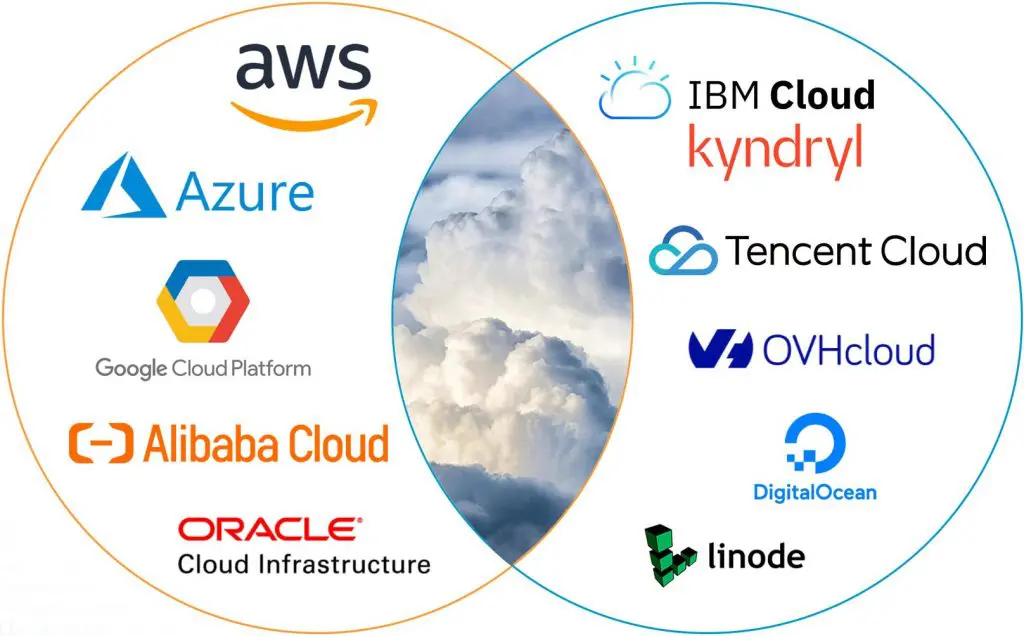The cloud has transformed the way businesses operate by offering scalable, cost-effective, and flexible solutions for hosting applications, storing data, and managing infrastructure. As cloud computing continues to grow, so does the number of cloud service providers, each with its own set of services and features. Choosing the right cloud service provider is a critical decision for any organization. In this comprehensive guide, we’ll explore the key factors to consider when making this decision.
Understanding the Types of Cloud Service Providers
Before diving into the selection process, it’s essential to understand the types of cloud service providers. There are three primary models:
- Infrastructure as a Service (IaaS): IaaS providers offer virtualized computing resources over the internet. Users can rent virtual machines, storage, and networking infrastructure. Examples include Amazon Web Services (AWS), Microsoft Azure, and Google Cloud Platform (GCP).
- Platform as a Service (PaaS): PaaS providers offer a platform that includes tools and services for application development, deployment, and management. Users can focus on building and deploying applications without worrying about infrastructure management. Examples include Heroku, Google App Engine, and Microsoft Azure App Service.
- Software as a Service (SaaS): SaaS providers deliver software applications over the internet, typically on a subscription basis. Users can access software applications without the need for installation or maintenance. Examples include Salesforce, Google Workspace, and Microsoft 365.
Key Factors for Choosing a Cloud Service Provider
1. Cost
Cost is a critical factor when choosing a cloud service provider. Consider the pricing model, including pay-as-you-go, reserved instances, and pricing tiers. Evaluate your organization’s budget and the cost-effectiveness of the provider’s services. Keep in mind that pricing structures can vary significantly between providers.
2. Services and Features
Different providers offer various services and features. Assess your specific requirements and ensure that the provider offers the necessary tools and capabilities. Consider services like virtual machines, databases, container orchestration, machine learning, and content delivery networks (CDNs).
3. Performance and Reliability
Evaluate the provider’s performance and reliability. Look at factors such as uptime guarantees, service level agreements (SLAs), and the provider’s global network infrastructure. Performance is crucial for ensuring that your applications run smoothly.
4. Compliance and Security
For organizations in regulated industries, compliance and security are paramount. Check if the provider complies with industry-specific regulations and standards. Assess the security measures, encryption options, and access control features provided.
5. Scalability
Scalability is a fundamental feature of cloud computing. Ensure that the provider can scale your resources up or down as needed to accommodate growth or fluctuations in demand.
6. Support and Documentation
Consider the level of support and documentation provided by the cloud service provider. Access to documentation, support plans, and a responsive support team can be crucial for addressing issues and optimizing your infrastructure.
7. Ecosystem and Integration
Examine the provider’s ecosystem and integration options. Some providers offer a rich marketplace of third-party services and tools that can enhance your cloud environment. Integration with your existing systems and tools is also vital.
8. Location and Data Residency
Data residency laws may require data to be stored in specific regions or countries. Ensure that the provider has data centers in locations that align with your data residency requirements.
9. Vendor Lock-In
Consider the potential for vendor lock-in. Some providers offer proprietary services that can make it challenging to migrate to another provider or on-premises infrastructure. Evaluate the portability of your applications and data.
10. User Experience and Ease of Use
The user experience can significantly impact your team’s productivity. Evaluate the provider’s management console, APIs, and developer tools for ease of use.
Vendor Comparison
To make an informed decision, you can create a vendor comparison matrix. List your specific requirements and rate each provider based on how well they meet those requirements. This structured approach can help you identify the best fit for your organization.
Conclusion
Choosing the right cloud service provider is a pivotal decision that can influence your organization’s efficiency, costs, and overall success. By carefully considering factors like cost, services, performance, security, and more, you can select a provider that aligns with your business goals and technical requirements. Keep in mind that cloud provider selection is not static; you can revisit your decision as your organization’s needs evolve. Regularly assessing your cloud provider’s performance and features will ensure that you’re getting the most out of your cloud infrastructure.





